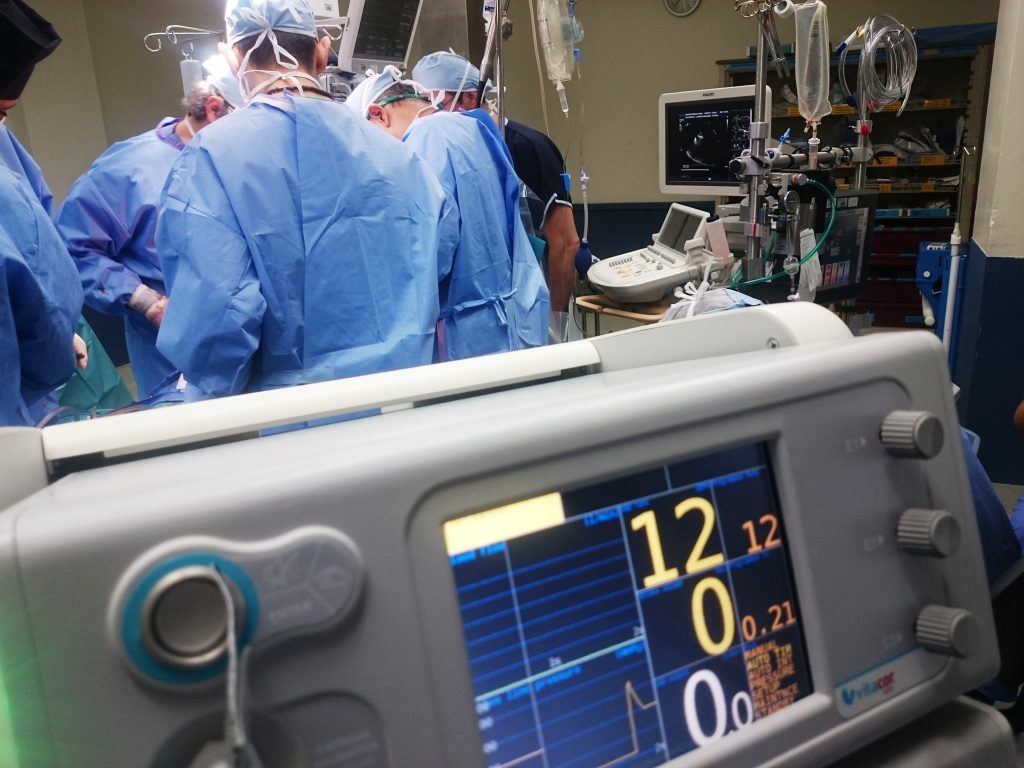After over 1,000 deaths in China to the coronavirus epidemic, could the use of blockchain to give faster payouts to those infected be a tipping point for the technology’s use in the health care industry?
Xiang Hu Bao is not an insurance product, but an online mutual aid platform that uses blockchain technology to offer health plans to 104 million participants. It recently added the deadly illness as a cause for which users could receive a maximum one-time disbursement of 100,000 yuan (US$14,324)
Xiang Hu Bao is closely tracking the coronavirus epidemic — which the World Health Organization has officially renamed Covid-19 — among its users.
“Blockchain technology brings immutable records and transparency to various industries, including health care and charitable donation, thus it can build trust and encourage more people to participate in the mutual aid program,” a spokesperson for Ant Financial told Forkast.News. “We are confident that blockchain technology can bring value to the health care industry.”
Xiang Hu Bao integrates Ant Blockchain, a financial-grade consortium technology developed by Ant Financial’s blockchain team. When participants make a claim, they submit supporting evidence via the Alipay app and it goes through a review and approval process. Ant Financial, which owns Alipay, is an affiliate of Chinese multinational Alibaba Group Holding.

High expectations for blockchain in health care
Highlighting the need for numerous improvements in the health care sector, the U.S. Department of Health and Human Services’ Office of the National Coordinator for Health Information Technology issued a Shared Nationwide Interoperability Roadmap requesting ubiquitous, secure network infrastructure; verifiable identity and authentication of all participants; and consistent representation of authorization to access electronic health information.
While current systems may not possess the technical capabilities to meet these standards, industry insiders say, blockchain adoption could provide the sturdiness asked for in all of these criteria once the technology is mature enough.
According to the Ant Financial spokesperson, Xiang Hu Bao users have already begun receiving coronavirus-related disbursements, but the exact number of claimants to date is not currently available.
Ant Financial is also using blockchain to speed up transactions and prevent fraud in other areas, including product provenance, charitable donations, supply chain finance, medical prescriptions and electronic invoices.
The medical industry has high hopes for blockchain to improve other areas, including record management and biomedical research and development.
“These expectations are based on the key aspects of blockchain technology, such as decentralized management, immutable audit trails, data provenance, robustness and improved security and privacy,” Hyung-Jin Yoon wrote in the Journal of Healthcare Informatics Research.
Real-world applications
Transparency is also now a priority demand in the medical industry, especially as the coronavirus outbreak has raised concerns over the Chinese government underreporting the number of infected and deceased.
HashLog, for example, is a coronavirus tracker that uses Hedera Hashgraph’s distributed ledger technology to ensure real-time logging and visualization of the spread of the disease.
See related article: How Hedera Hashgraph’s decentralized tracker could stop censorship in coronavirus reporting
Mance Harmon, CEO and cofounder of Hedera Hashgraph, told Forkast.News that “anybody that wants to download a copy [of the database] can do so and run it and have access to that stream of information in real time, just like anyone else might, regardless of where you live in terms of geography or political environment that you might live in.”

In Hong Kong, where the virus has infected over 50 people, Blue Cross Insurance, a subsidiary of the Bank of East Asia, is also using blockchain to save processing time and improve transparency. In addition to reducing the potential for human error and manpower needed, its blockchain insurance platform is capable of handling up to 1,000 transactions per second.
“Our blockchain-backed claims service has played a key role during the outbreak of the coronavirus by totally eliminating the paper process and the need for back-and-forth documents delivery to clinics,” Patrick Wan, Blue Cross’s managing director, told the South China Morning Post. “This really helps to mitigate the risk of infection from face-to-face contact.”
See related article: Giving patients power over data builds trust in health care, says Blockdoc’s Alan Chiu
Since the app’s launch in April 2019, Blue Cross says they’ve seen on average double-digit monthly growth in the number of users, as policyholders can see the results of their claims within a day.
Nonetheless, while blockchain technology holds promise for the industry, analysts warn a number of issues still need to be addressed before it is suitable for wide adoption.
A Deloitte report points out a variety of potential hurdles in blockchain implementation, including the need for data standardization, costs of operation and regulatory considerations.
“Blockchain technology presents numerous opportunities for health care; however, it is not fully mature today nor a panacea that can be immediately applied,” the report concluded. “Several technical, organizational, and behavioral economics challenges must be addressed before a health care blockchain can be adopted by organizations nationwide”




